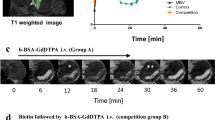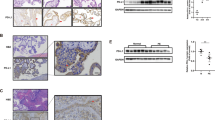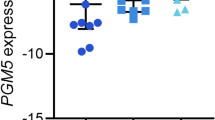Abstract
Knowing that IUGR is associated with altered placental transport, we aimed to characterize the placental transport of folic acid (FA), thiamine (THIAM), serotonin (5-HT), and 1-methyl-4-phenylpyridinium (MPP+) in IUGR. For this, we compared the transport characteristics of 3H-FA, 3H-THIAM, 3H-5-HT, and 3H-MPP+ in primary cultured human cytotrophoblasts isolated from IUGR and normal placentas (GRTB and NTB cells, respectively) and quantified mRNA expression of several placental transporters, by real-time RT-PCR. Our results show that GRTB cells take up 3H-FA more efficiently (higher kin and Amax values) and have higher transport capacity (higher Vmax values) for 3H-FA, 3H-5-HT, and 3H-MPP+, when compared with NTB cells. In addition, GRTB cells take up 3H-THIAM with higher affinity and 3H-MPP+ with lower affinity than NTB cells. Finally, IUGR placentas have a generalized increase in mRNA expression of FA, THIAM, 5-HT, and MPP+ transporters, when compared with normal placentas, suggesting that the increase in transport capacity may be due to increased expression of placental transporters. These results point to an effect of “compensation for the weakness” of the IUGR placenta and pose the placenta as an active mediator of the communication between maternal and fetal environments.
Similar content being viewed by others

Log in or create a free account to read this content
Gain free access to this article, as well as selected content from this journal and more on nature.com
or
Abbreviations
- 5-HT:
-
serotonin
- FA:
-
folic acid
- GRTB:
-
primary cultured growth-restricted human cytotrophoblasts
- MPP+:
-
1-methyl-4-phenylpyridinium
- NTB:
-
primary cultured normal human cytotrophoblasts
- PALP:
-
placental alkaline phosphatase
- THIAM:
-
thiamine
References
Monk D, Moore GE 2004 Intrauterine growth restriction—genetic causes and consequences. Semin Fetal Neonatal Med 9: 371–378
McCarthy C, Cotter FE, McElwaine S, Twomey A, Mooney EE, Ryan F, Vaughan J 2007 Altered gene expression patterns in intrauterine growth restriction: potential role of hypoxia. Am J Obstet Gynecol 196: 70.e1–70.e6
Cetin I, Foidart JM, Miozzo M, Raun T, Jansson T, Tsatsaris V, Reik W, Cross J, Hauguel-de-Mouzon S, Illsley N, Kingdom J, Huppertz B 2004 Fetal growth restriction: a workshop report. Placenta 25: 753–757
Barker DJ 1998 In utero programming of chronic disease. Clin Sci (Lond) 95: 115–128
Picciano MF 2003 Pregnancy and lactation: physiological adjustments, nutritional requirements and the role of dietary supplements. J Nutr 133: 1997S–2002S
Worthington-Roberts B 1999 Nutrition. In: Cohen W, Cherry S, Merkatz I (eds) Cherry and Merkatz's Complications of Pregnancy. Lippincott Williams & Wilkins, London; pp 17–49
Bolte AC, van Geijn HP, Dekker GA 2001 Pathophysiology of preeclampsia and the role of serotonin. Eur J Obstet Gynecol Reprod Biol 95: 12–21
Martel F, Keating E 2003 Uptake of 1-methyl-4-phenylpyridinium (MPP+) by the JAR human placental choriocarcinoma cell line: comparison with 5-hydroxytryptamine. Placenta 24: 361–369
Sayre LM 1989 Biochemical mechanism of action of the dopaminergic neurotoxin 1-methyl-4-phenyl-1,2,3,6-tetrahydropyridine (MPTP). Toxicol Lett 48: 121–149
Leitner K, Szlauer R, Ellinger I, Ellinger A, Zimmer KP, Fuchs R 2001 Placental alkaline phosphatase expression at the apical and basal plasma membrane in term villous trophoblasts. J Histochem Cytochem 49: 1155–1164
Calhau C, Hipolito-Reis C, Azevedo I 1999 Alkaline phosphatase and exchange surfaces. Clin Biochem 32: 153–154
Kliman HJ, Nestler JE, Sermasi E, Sanger JM, Strauss JF 3rd 1986 Purification, characterization, and in vitro differentiation of cytotrophoblasts from human term placentae. Endocrinology 118: 1567–1582
Keating E, Goncalves P, Lemos C, Costa F, Campos I, Smith SB, Bridges CC, Martel F 2007 Progesterone inhibits folic acid transport in human trophoblasts. J Membr Biol 216: 143–152
Keating E, Lemos C, Goncalves P, Martel F 2008 Acute and chronic effects of some dietary bioactive compounds on folic acid uptake and on the expression of folic acid transporters by the human trophoblast cell line BeWo. J Nutr Biochem 19: 91–100
Anagnostou F, Plas C, Forest N 1996 Ecto-alkaline phosphatase considered as levamisole-sensitive phosphohydrolase at physiological pH range during mineralization in cultured fetal calvaria cells. J Cell Biochem 60: 484–494
Bradford MM 1976 A rapid and sensitive method for the quantitation of microgram quantities of protein utilizing the principle of protein-dye binding. Anal Biochem 72: 248–254
Muzyka A, Tarkany O, Yelizanof V, Sergienko U, Boichuk A 2005 Non-linear regression (curve fit), in GraphPad Prism (version 4.03) for Windows. GraphPad Software, San Diego, CA
Ganapathy V, Smith SB, Prasad PD 2004 SLC19: the folate/thiamine transporter family. Pflugers Arch 447: 641–646
Qiu A, Jansen M, Sakaris A, Min SH, Chattopadhyay S, Tsai E, Sandoval C, Zhao R, Akabas MH, Goldman ID 2006 Identification of an intestinal folate transporter and the molecular basis for hereditary folate malabsorption. Cell 127: 917–928
Dutta B, Huang W, Molero M, Kekuda R, Leibach FH, Devoe LD, Ganapathy V, Prasad PD 1999 Cloning of the human thiamine transporter, a member of the folate transporter family. J Biol Chem 274: 31925–31929
Keating E, Lemos C, Azevedo I, Martel F 2006 Characteristics of thiamine uptake by the BeWo human trophoblast cell line. J Biochem Mol Biol 39: 383–393
Nguyen TT, Tseng YT, McGonnigal B, Stabila JP, Worrell LA, Saha S, Padbury JF 1999 Placental biogenic amine transporters: in vivo function, regulation and pathobiological significance. Placenta 20: 3–11
Sata R, Ohtani H, Tsujimoto M, Murakami H, Koyabu N, Nakamura T, Uchiumi T, Kuwano M, Nagata H, Tsukimori K, Nakano H, Sawada Y 2005 Functional analysis of organic cation transporter 3 expressed in human placenta. J Pharmacol Exp Ther 315: 888–895
Sastry BV 1999 Techniques to study human placental transport. Adv Drug Deliv Rev 38: 17–39
Bloxam DL, Bax CM, Bax BE 1997 Culture of syncytiotrophoblast for the study of human placental transfer. I. Isolation and purification of cytotrophoblast. Placenta 18: 93–98
Moreau R, Simoneau L, Lafond J 2001 Characteristics of calcium uptake by BeWo cells, a human trophoblast cell line. Placenta 22: 768–775
Komoda T, Hokari S, Sonoda M, Sakagishi Y, Tamura T 1982 l-Phenylalanine inhibition of human alkaline phosphatases with p-nitrophenyl phosphate as substrate. Clin Chem 28: 2426–2428
Holmgren PA, Stigbrand T, Damber MG, von Schoultz B 1979 Serum levels of placental alkaline phosphatase in high-risk pregnancies. Obstet Gynecol 54: 631–634
Mayhew TM, Manwani R, Ohadike C, Wijesekara J, Baker PN 2007 The placenta in pre-eclampsia and intrauterine growth restriction: studies on exchange surface areas, diffusion distances and villous membrane diffusive conductances. Placenta 28: 233–238
Newhouse SM, Davidge ST, Winkler-Lowen B, Demianczuk N, Guilbert LJ 2007 In vitro differentiation of villous trophoblasts from pregnancies complicated by intrauterine growth restriction with and without pre-eclampsia. Placenta 28: 999–1003
Acknowledgements
We thank Professor Seth Guller (Yale University, New Haven, CT, USA) for technical support in establishing primary cultures; Dr. Joana Marques (University of Porto, Portugal) for β-actin primers donation; Dr. Otília Brandão (University of Porto, Portugal) for technical help with GR placentas; and Mrs. Luisa Vasques (University of Porto, Portugal) for laboratory support.
Author information
Authors and Affiliations
Corresponding author
Additional information
Supported by the FCT and Programa Ciência, Tecnologia e Inovação do Quadro Comunitário de Apoio (POCTI/SAU-FCF/59382/2004).
Rights and permissions
About this article
Cite this article
Keating, E., Gonçalves, P., Costa, F. et al. Comparison of the Transport Characteristics of Bioactive Substances in IUGR and Normal Placentas. Pediatr Res 66, 495–500 (2009). https://doi.org/10.1203/PDR.0b013e3181b9b4a3
Received:
Accepted:
Issue date:
DOI: https://doi.org/10.1203/PDR.0b013e3181b9b4a3


